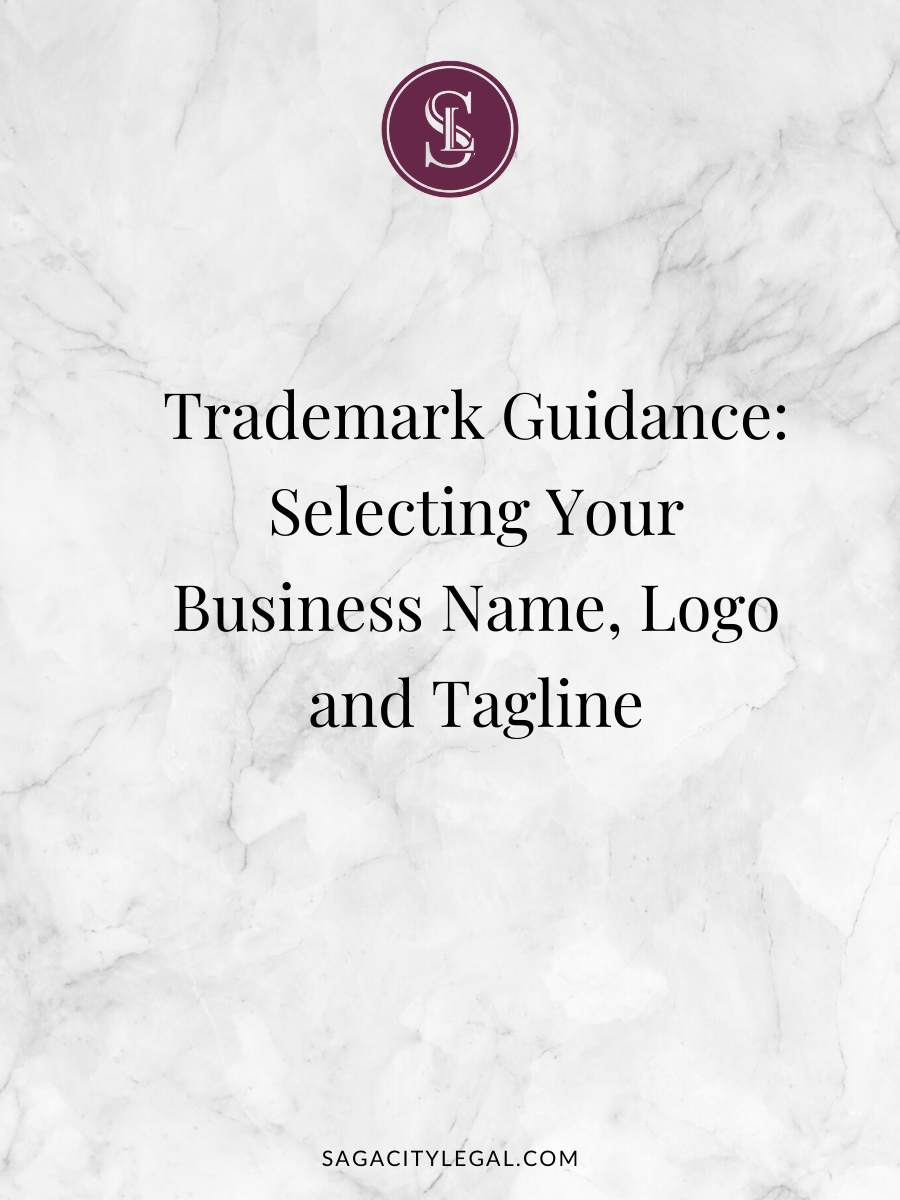What does a trademark have to do with that brand you love? Choosing a name, logo design, and/or tagline for your business, product, or service can be a very emotional decision. You may spend hours brainstorming and getting opinions from others; changing your mind multiple times along the way. You may hire someone to create a professional custom logo, or use a logo generator, or logo maker. Finally, you decide on your perfect name, logo, and tagline. Ones that reflect the personality, objectives, and mission of your business. “Excellent – all done and onto the next task, right?” Not exactly.
You need to make sure that using that name, logo, and/or tagline is risk-free.
That’s where I come in. When a client comes to me for protection of their name, logo, and/or tagline, the first action I take is to do a thorough legal review. I stress legal risk mitigation with all my clients. When you partner with me for legal protection, it is my goal to give you the peace of mind that your business image is safe, so you can focus on what you do best.
Before you finalize your brand name, logo and/or tagline, here’s some guidance to consider.
This guidance mirrors that of the United States Patent and Trademark Office examination when you file a trademark application.
Trademark Protection
Create Strong Trademarks and Service Marks
As you select your brand name, logo design, and tagline, it is best to create strong marks. The strongest and most easily protectable types of marks are fanciful marks and arbitrary marks, because they are inherently distinctive. Fanciful marks are invented words without a dictionary or other known meaning. Think Apple or Google. Both are strong fanciful marks. Arbitrary marks are actual words with a known meaning that have no association/relationship with the goods protected. Think “Peach” for a nail salon. Fanciful and arbitrary marks are registrable and, indeed, are more likely to get registered than are descriptive marks. Moreover, because these types of marks are creative and unusual, it is less likely that others are using them.
No Likelihood of Confusion
Even with a fanciful or arbitrary mark, we still need to ensure that there is not a likelihood of confusion. Note that in order to find a likelihood of confusion, the marks do not have to be identical. When marks sound alike when spoken, are visually similar, have the same meaning (even if in translation), and/or create the same general commercial impression in the consuming public’s mind, the marks may be considered confusingly similar. Similarity in sound, appearance, and/or meaning may be sufficient to support a finding of likelihood of confusion, depending on the relatedness of the goods or services.
Avoid Names
It is also best not to select a mark that is a surname; geographic area of the origin of the goods or services; a foreign term that translates to a descriptive or generic term; an individual’s name or likeness; the title of a single book or movie; and matter that is used in a purely ornamental manner.
The legal goal in selecting your business name, logo, and tagline is to be able to protect them through trademark registration; and to avoid potential trademark infringement claims by others.
Trademark Brand Guidance
I always advise my clients to select their own mark, with my legal guidance of course. Your mark should reflect your brand personality. It should be representative of your product, your business, you. Only you know your ideal client.
Pick a name, logo, and tagline that will cause them to know, like, and trust you and your business.
Pick a name and logo that is authentic to you. Similarly, your tagline accompanying your logo and name should explain what you do to that ideal client in very simple terms. If you need help doing so, seek out a brand or business coach like Cassandra Ewert of Lovely Impact.
My Trademarks
I’ll leave you with my personal brand example to help you. Notice my firm name “Sagacity Legal” incorporates an arbitrary term “sagacity” with a descriptive term “legal”. Although appearing to be arbitrary in the trademark context, I purposefully chose the term to describe me and guide my ideal client to know, like and trust me. If you’re not aware, Sagacity means: “Wise and prone to evaluating information before making a decision. The trait of solid judgement and intelligent choices.” This is exactly how I show up for my clients. Having “legal” in the name let’s people and search engines know I provide legal services. My tagline of “securing your success” tells clients exactly what to expect from my legal representation. My logo and brand colors were selected to provide a feeling of security and comfort. All this taken together, created the brand I desired along with trademarks that were registrable.
After you’ve settled on your business name, logo, and/or tagline, the next step towards securing your success is to register the trademarks. For more information on why this is important, check out my article “Trademark Your Company Name: Why It’s Important For Your Business.”
Do you need help selecting and protecting your business name, logo or tagline? As an experienced trademark attorney, I’m here for you. Contact me here.
Want to take the first step to legally securing your success? Get your Free Ebook today!


leave a comment on this post.